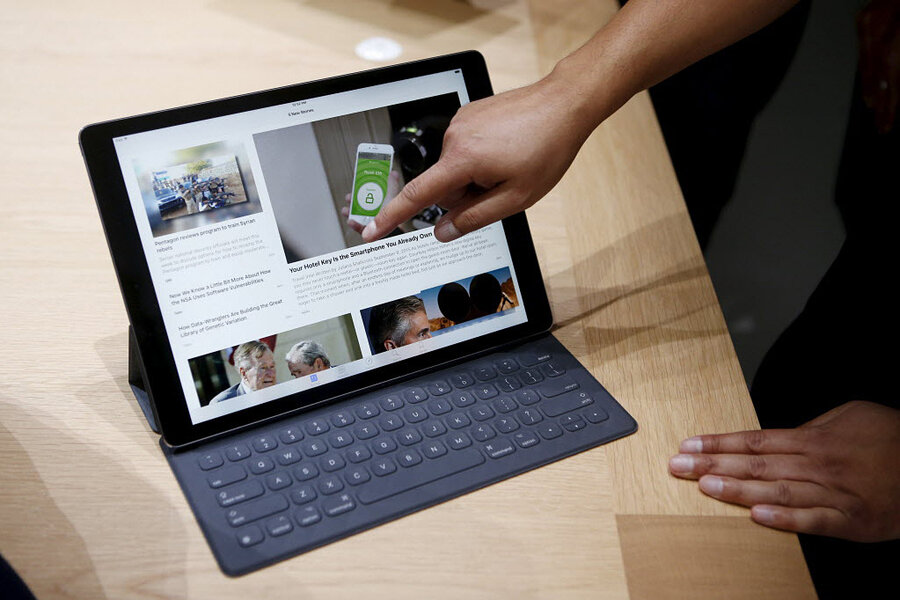How similar is the iPad Pro to the Microsoft Surface?
Loading...
Apple made some big announcements yesterday at its annual iPhone reveal event, not the least of which were about the new iPad Pro. At 12.9 inches, it’s the biggest iPad yet and weighs only about a half pound more than its predecessor.
The upgrades to the tech are undeniable, but there were some missed opportunities and a persistent comparison taking a little wind out of the Apple’s announcement sails.
Boasting a 5.6-million-pixel display, four speakers that auto balance depending on how you hold the device, and Apple’s new 64-bit A9X processor, the iPad Pro is giving some tablet PCs a serious run for their money. Phill Schiller, Apple’s senior VP of worldwide marketing, looked giddy as he expounded the 10-hour battery life, full-sized on-screen keyboard, and new physical keyboard cover.
However, the tablet runs the same iOS as the current iPad and iPhone, leaving some people feeling quite disappointed.
“We finally got features like split screen multitasking and the ability to do picture in picture video, but Apple has neglected the place where we all start out,” wrote Owen Williams of TheNextWeb.com. “At 12 inches it looks ridiculous, with a maximum of 25 icons all spaced out and no way to fill in the gaps.”
Mr. Williams goes on to compare the homescreen of the iPad Pro with that of the Window’s Surface running Window 10, lamenting that though he doesn’t like the homescreen look of the Surface a lot, at least “Microsoft’s live tiles are attractive because they can surface information right there on the homescreen to draw you into an app.”
With accessories such as the new Apple Pencil, Apple’s version of a stylus, and its magnetically connecting physical keyboard, some reviewers are finding it hard not to continue the iPad-versus-Surface comparisons.
“This is the part where the iPad Pro starts to sound a lot like Microsoft's Surface tablet,” says Lauren Goode in her article for The Verge. “The aesthetics are very different, but until we can get our hands on the iPad Pro for an extended period of time it's tough to say exactly how powerful it is (or how useful its accessories are).”
Engadget threw its own comparisons on the pile, opening with the unavoidable Steve Jobs quote: “It's like we said on the iPad, if you see a stylus, they blew it.” Writer Aaron Souppouris knows Mr. Jobs was referring to something entirely different from the Apple Pencil, but also knows that, “Apple recognizes that with Windows 10, Microsoft's Surface and similar devices actually pose a threat to the iPad in enterprise environments. That's why we're seeing styli and keyboards; that's why it's paired with IBM over the past year to make sure there are plenty of suitably enterprise-focused apps for iOS; and that's why it brought Microsoft onstage to show how "productivity" friendly the Pro is.”
As the iPad Pro is not actually on the market yet, and release dates are still elusive, many reviewers are tamping down their opinions, waiting for more time with the device to either celebrate or decry Apple’s latest tablet release. But one thing seems certain, the Windows Surface versus iPad Pro comparisons are likely here to stay. It’s not often that we see Apple playing catch-up, especially to Microsoft, but the competition in this niche market is at least giving consumers some fun and functional tech.







